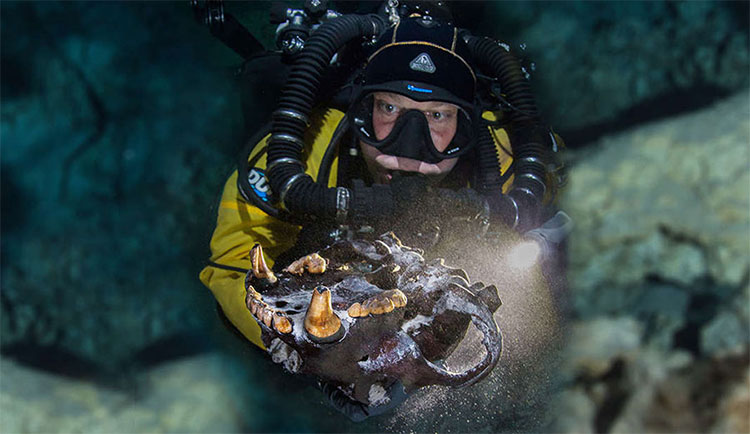Discover rare fossils of the Ice Age bear and wolf-like predator
Researchers have discovered rare fossils in a famous underwater cave Hoyo Negro, in Mexico.
This is a finding that is noticed by the skeletons of ice age predators that are thought to exist only in South America at the time.
The Mexican and American research groups were the ones who discovered the giant Arctotherium wingei and other fossils of the extinct bear that are believed to be the largest ever, as well as a wolf-like species.

Rare and precious fossils have been discovered by new scientists.
Due to the tropical climate, part of Mexico and Central America does not have many fossils because conditions are not conducive to the preservation of ancient remains. However, the special cave in the Yucatan Peninsula is providing a lot of new information about the fauna, including humans, thanks to it as a natural trap.
Hoyo Negro has a floor lower than 55 meters below sea level, meaning that about 11,000 years ago, these animals were likely to fall nearly 60 meters leading to their deaths. Although it was dry at the time, it would then fill the melting glacier water when the Ice Age ended, helping preserve preserved skeletons to date.
Researchers first dived to explore this cave in 2007, where they discovered what we now know is the oldest complete skeleton found in the Americas. Named Naia, the remains of a young woman lived from 12,000 to 13,000 years ago and died about 17 years old.
In the years since then, scientists have found skeletons of many creatures, extinct and extant, including serrated tigers, cougars, tapirs, sloths, and bears. Until recently, newly discovered skeletons were mistakenly identified as a member of the genus Tremarctos (universal bear) and Canis latrans wolves .
This finding is helping to fill some of the distribution gaps of large mammals roaming the Earth in the last Ice Age.
From 2.5 million to 3 million years ago was the time called America's Great Biological Crossroads, terrestrial and freshwater animals were transmitted from North America through Central America into South America and vice versa, thanks to a tree Earth bridges form and connect between individual continents.
- The family of the great bear war wolf and bloody outcome
- Detection of extinct wolf fossils
- Black wolf is the first genetically modified predator
- Eel wolf - master predator on the bottom of the sea
- Detection of bear fossils dating to 120,000 years in Argentina
- Revealed about rare wolves who know how to swim, eat seafood
- 10 most dangerous predators
- Rare and precious white horse bears found in Quang Ngai
- Catch the extremely rare albino cat bear
- Hanoi transferred rare horse bears
- Detection of giant bear fossils
- Extremely rare wolf moon appears all over the world
 Discovered an ancient centipede fossil 99 million years old
Discovered an ancient centipede fossil 99 million years old Discovered bat-like dinosaurs in China
Discovered bat-like dinosaurs in China Discovered a 200-year-old bronze cannon of the coast
Discovered a 200-year-old bronze cannon of the coast Discover 305 million-year-old spider fossils
Discover 305 million-year-old spider fossils